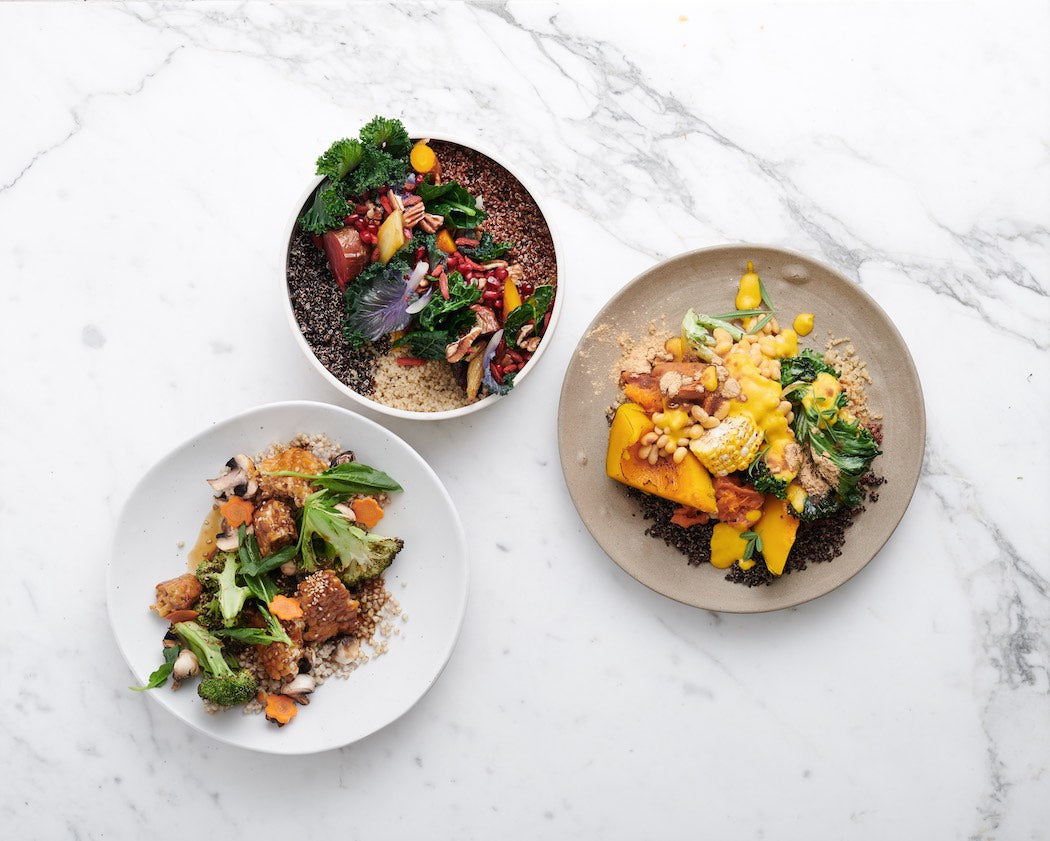I was born with an intolerance to dairy, so most of our meals growing up were plant-based. When I was younger, I never knew what I was missing, and I was totally okay with that; aside from experiencing firsthand the healing properties of a plant-based diet, I knew that I loved animals and cared about the environment, and that was enough reason for me to abstain from animal products and go vegan.
Why go vegan?
As an adult, I often meet people interested in living more plant-centric lifestyles or going vegan altogether, but have no idea where to start. I like to begin by asking them the motivation behind the transition; it’s different for everyone, after all. Some people want to eliminate animal products from their diet to improve their health. Others do it for moral and ethical reasons, while some want to minimize their impact on the environment. No matter the inspiration, plant-based living benefits our personal health, humanity, and the planet as a whole. I feel like once people learn the magnitude of the impact that animal products have on our lives, it resonates with them on a deep level, and there’s often no turning back from that.
When people who are new to plant-based living ask me for advice on transitioning, I usually ask them about their current eating habits. The plant-based community in Vancouver is pretty big, so there isn’t a shortage of restaurants that serve delicious vegan cuisine—but eating takeout every night can get expensive. Still, a common challenge that I’ve found is that many people feel overwhelmed with the idea of preparing vegan food. Over the past few years, many new vegan meat alternatives have entered the market, making the transition to veganism easier. Things like veggie burgers and soy-based mock meat are usually good sources of protein and minerals, but they are also highly processed and can contain a lot of sodium.
Tips for vegan eating
I like to encourage people to take some time to learn as much as they can about plant-based foods. There are so many misconceptions about plant-based living, and a lot of people are hesitant to adopt veganism because they think they can’t get adequate nutrients from a diet without animal products. People are often surprised when they learn that we can get the necessary protein, fats, vitamins, and minerals that our bodies need from plants alone. Plus, plant-based foods are rich in phytonutrients and fiber, which many people lack in their diets.
Vegan proteins and grains
A good way to start is by familiarizing yourself with whole grains and protein sources such as beans, nuts, seeds, tempeh, and tofu, and then introducing them into your diet. If you are craving a specific meal that contains animal products, try Googling “vegan version of _________ recipe.” You’d be surprised at how many vegan variations of popular meals are out there. Take a look at my vegan bolognese below if you’re searching for a filling, nutritious version of spaghetti bolognese.
Vegan food substitutions
If you’re not a whiz in the kitchen, learn some basic, easy-to-prepare vegan recipes that you’ll enjoy, and then master cooking them. Once you’re comfortable with those recipes, start to experiment with more complex meals. Make a vegan pantry list and learn how to substitute common animal products (for example: in baking, one tablespoon of chia or flaxseed and three tablespoons of water can replace an egg). Substituting milk is easy, and really boils down to preference; I like the taste of cashew milk and oat milk, but there are so many to choose from. When you’re cooking, a recipe might call for milk with a higher fat content, in which case coconut would be your best bet. The Vegano Marketplace, our online grocery store, is a great place to stock up on some of these plant-based essentials.
Despite having years of plant-based cooking experience, there were still many times I found it challenging to balance cooking with a busy work schedule, exercising, and having a social life. Knowing that so many other people were facing the same issue was one of the driving forces for me and Conor Power to create Vegano. Although there are many meal-kit delivery services out there, very few offer vegan options, and the ones that do have very limited choices. Our meal kits offer delicious, healthy dishes that can be ready in under 30 minutes, regardless of your culinary abilities.
Combining two things that I am passionate about—technology and leading a healthy, plant-based lifestyle—has been such a rewarding journey. I love what I do, and it makes me happy that I am helping people make healthier lifestyle choices, even if it’s just a few times a week.
Vegano’s subscribers are so diverse; they range from vegans and vegetarians to flexitarians who just want to cut down their consumption of foods containing animal products. I tell people that plant-centric living shouldn’t focus on labels or placing yourself in a box based on dietary restrictions. Reducing your consumption of animal products in any capacity can have a positive impact on your personal health and wellbeing, as well as on your community and the environment. Leading a plant-based lifestyle is a learning process, but it’s important to remember that even the little things count.
Want to try Vegano’s plant-based meal kits? Sign up with the code HABITAT50 for 50% off your first box.
Vegan bolognese recipe
Ingredients
- 9 ounces cremini mushrooms
- 1 red or yellow onion, cut into 4 pieces
- 1 cup of walnuts (I’ve used pecans before as well)
- 2 stalks celery, cut into 2-inch pieces
- 2 peeled carrots, cut into 2-inch pieces
- ¼ cup grapeseed or olive oil
- 4 cloves garlic, crushed
- ¼ cup white wine
- 1 28-ounce can crushed tomatoes
- 1 ½ teaspoons salt
- ½ teaspoon nutmeg
- 1 bay leaf
- ⅔ cup lentils (I prefer red)
- 1 cup vegetable stock
- 1 cup water
- ½ cup nutritional yeast
- 1 tablespoon balsamic vinegar
- Pasta noodles or spaghetti squash
Instructions
- In a blender or food processor, add the mushrooms and onions. Continue to process until chopped finely. Add in the nuts and blend until small.
- Transfer the mixture to a bowl.
- In the same blender or food processor, add the celery and carrots. Process until chopped into small pieces. Set aside.
- In a large pot, heat the oil over medium heat. Add the mushroom-onion-nut mixture. It will start to steam as it burns off the liquid. Continue to cook until the mixture is brown.
- Add crushed garlic and cook for 30 seconds. Make sure the garlic doesn’t burn!
- Pour in the white wine and simmer for three minutes. The bottom of the pot will begin to stick—this is a good thing! Scrape the bottom with a spatula to remove the browned pieces.
- Add in the celery and carrots and stir. Add in the tomatoes, salt, nutmeg, bay leaf, lentils, vegetable stock, and water.
- Cover the pot and simmer for 45 minutes. Stir occasionally.
- Once the lentils are done to your liking, stir in the nutritional yeast and balsamic vinegar. Remove the bay leaf.
- Serve on top of noodles or spaghetti squash. You won’t even notice that it’s vegan.












